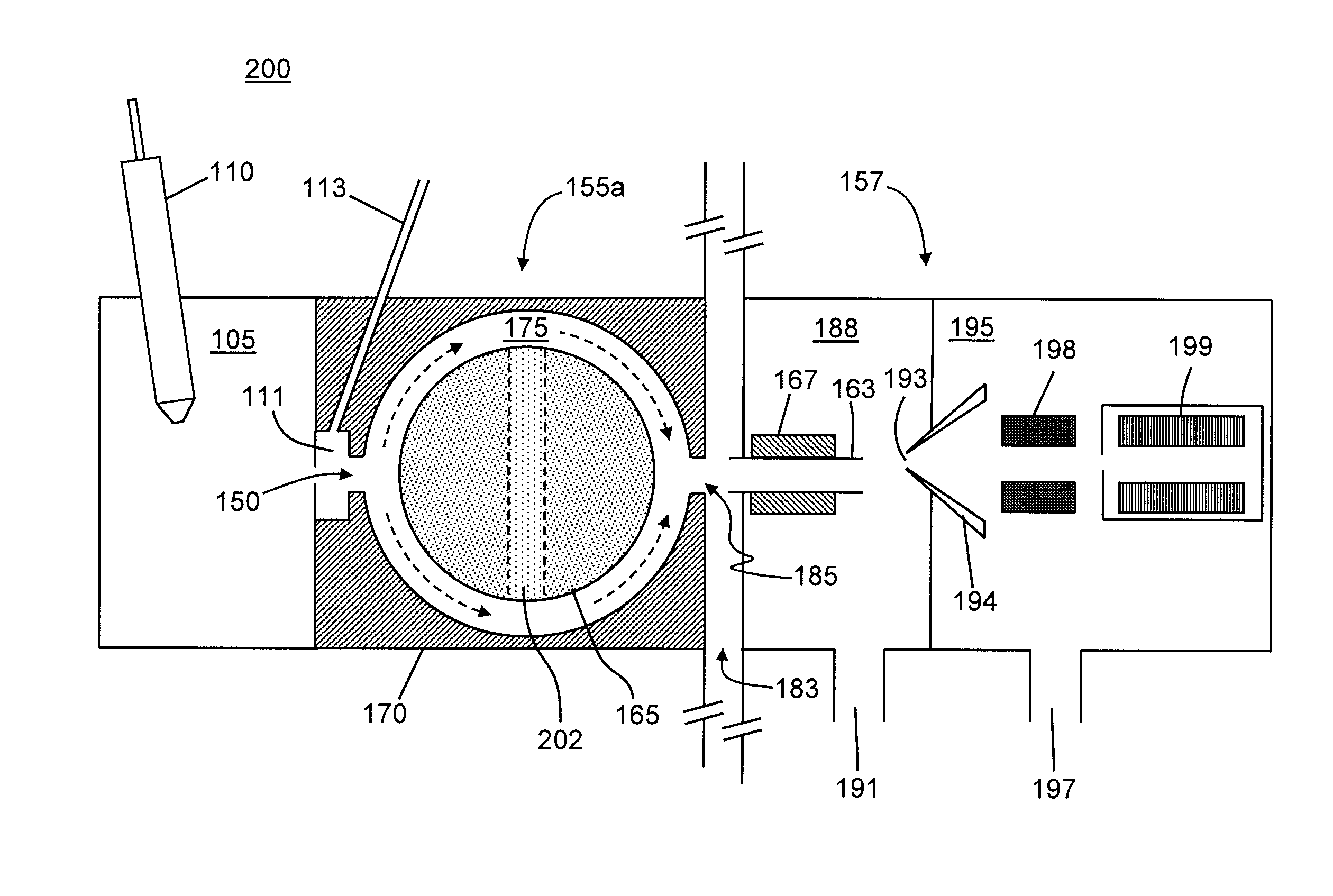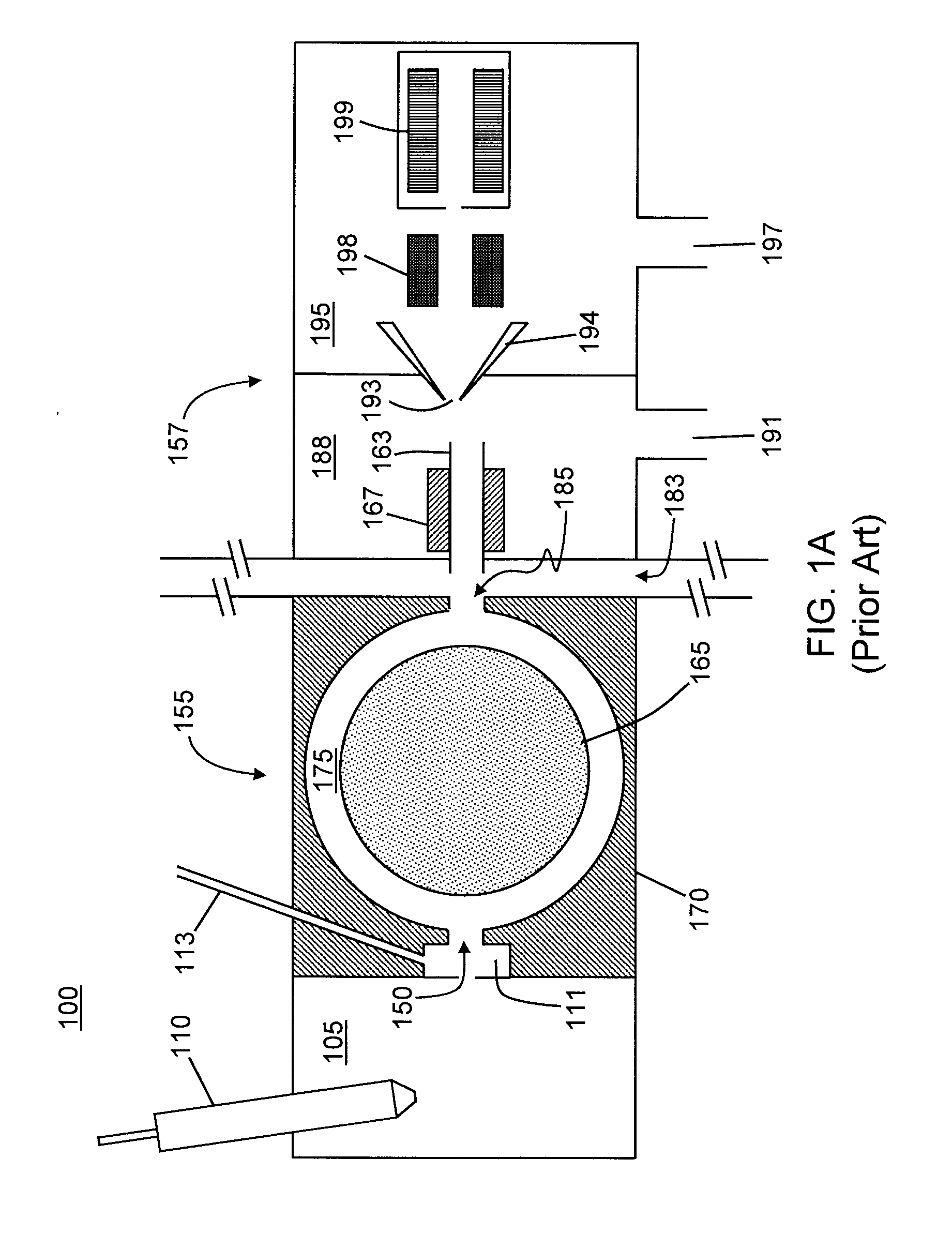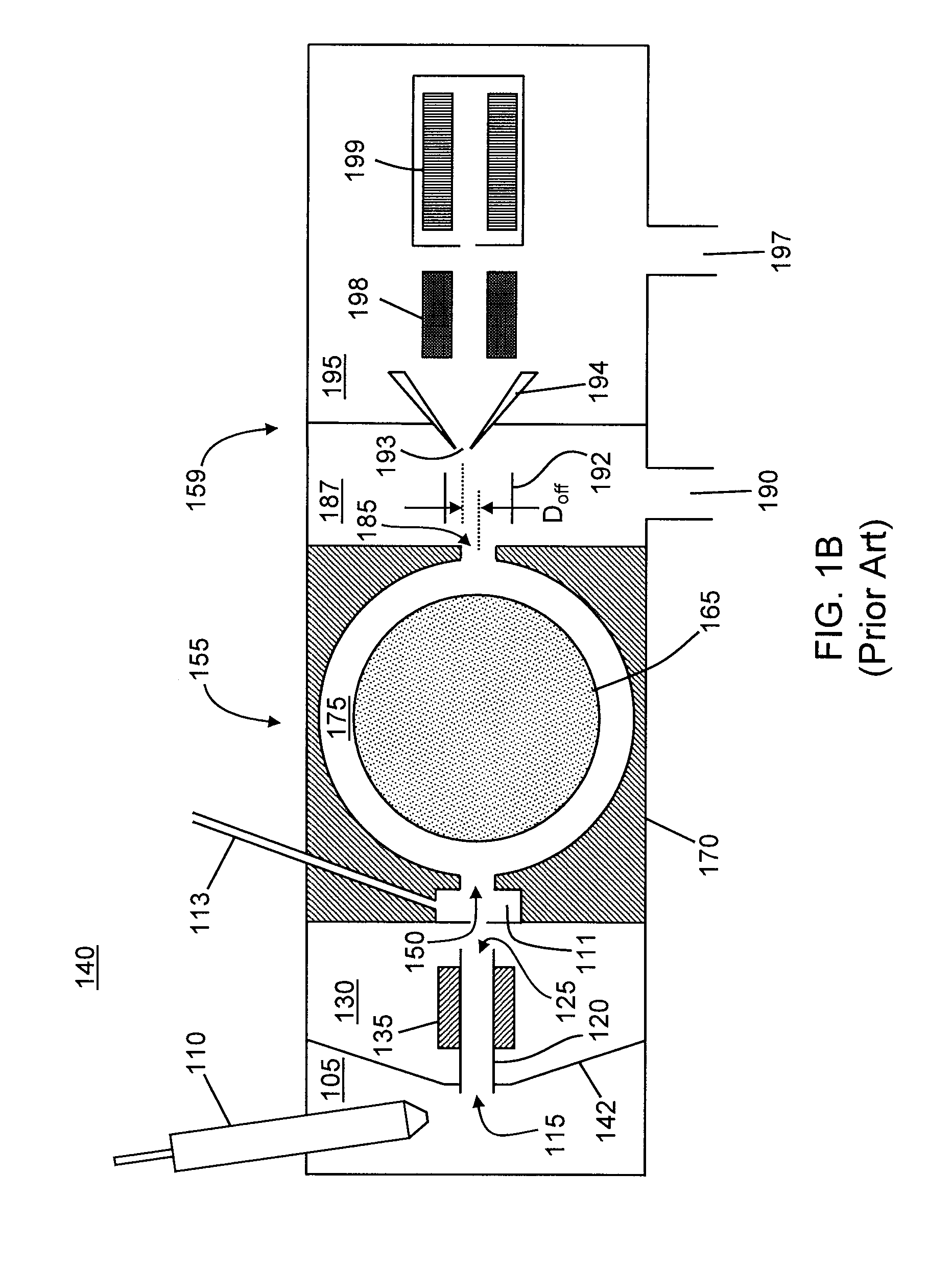FAIMS Having a Displaceable Electrode for On/Off Operation
a technology of on/off operation and electrode, which is applied in the field of ion spectrometry, can solve the problems of poor detection signal intensity, inability to unambiguously confirm the identification of the peak appearing in faims cv spectra, and takes a few minutes to achiev
- Summary
- Abstract
- Description
- Claims
- Application Information
AI Technical Summary
Benefits of technology
Problems solved by technology
Method used
Image
Examples
first embodiment
[0038]FIGS. 2A-2B are schematic diagrams depicting a system for analyzing ions including an ion mobility device in accordance with the present teachings. The system 200 (FIGS. 2A-2B) comprises several similar components, numbered similarly, to those already illustrated in and discussed in reference to FIG. 1A. However, in contrast to the system illustrated in FIG. 1A, the system 200 comprises a FAIMS cell 155a that is modified from the apparatus shown in FIG. 1A. In particular, the FAIMS 155a (FIGS. 2A-2B) has a cylindrical inner electrode 165 having a throughgoing conduit (a hole or bore) 202 that is substantially perpendicular to the cylindrical axis (note that the axis of the cylindrical inner electrode 165 is perpendicular to the plane of the drawing in FIG. 2A and other of the accompanying figures). Furthermore, the cylindrical inner electrode 165 is disposed within the FAIMS cell 155a such that it may be rotated about its axis so as to change the disposition or orientation of ...
third embodiment
[0045]FIG. 4A is a schematic diagram depicting a system for analyzing ions including an ion mobility device in accordance with the present teachings. The system 400 shown in FIG. 4A is generally similar to the system 100 (FIG. 1A) but with most of the mass spectrometer 157 not illustrated. Accordingly, FIG. 4A employs similar reference numbers for components that have already been introduced in and described in reference to FIG. 1A. As previously described, the system 400 comprises a small gap 183 separating a FAIMS cell 155 from a mass spectrometer 157. However, in contrast to the system 100, carrier gas is not allowed to vent through the gap 183. Instead, in the system 400, a reduced-diameter inlet orifice 150 and an air-tight seal 402 between the FAIMS cell 155 and the mass spectrometer 157 combine to enable the mass spectrometer vacuum system to pull a rate-restricted, pressure-reduced flow of gas through the FAIMS cell. The pressure within the FAIMS cell may thus be maintained ...
fourth embodiment
[0047]FIG. 5A is a schematic diagram depicting a system for analyzing ions including an ion mobility device in accordance with the present teachings. As in the system 400 (FIG. 4A), the system 500 (FIG. 5A) utilizes the vacuum system of the mass spectrometer 157 to maintain a reduced pressure within the FAIMS cell 155. In the system 500, the restriction of the rate of flow of carrier gas is provided by ion transfer tube 120, such as a capillary tube, that it coupled to the desolvation chamber 111 and the inlet orifice 150 of the FAIMS cell 155. A heater jacket 135 may be coupled to the ion transfer tube so as to promote de-solvation and solvent evaporation prior to ions entering the FAIMS cell. The system 510 shown in FIG. 5B is modified relative to the system 500 by replacement of the FAIMS cell 155 with the reconfigurable FAIMS cell 155a (or, alternatively, with the reconfigurable FAIMS cell 155b).
[0048]FIG. 6A is a schematic diagram depicting another embodiment of a system for an...
PUM
 Login to View More
Login to View More Abstract
Description
Claims
Application Information
 Login to View More
Login to View More - R&D
- Intellectual Property
- Life Sciences
- Materials
- Tech Scout
- Unparalleled Data Quality
- Higher Quality Content
- 60% Fewer Hallucinations
Browse by: Latest US Patents, China's latest patents, Technical Efficacy Thesaurus, Application Domain, Technology Topic, Popular Technical Reports.
© 2025 PatSnap. All rights reserved.Legal|Privacy policy|Modern Slavery Act Transparency Statement|Sitemap|About US| Contact US: help@patsnap.com



